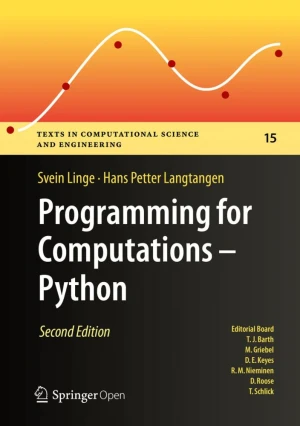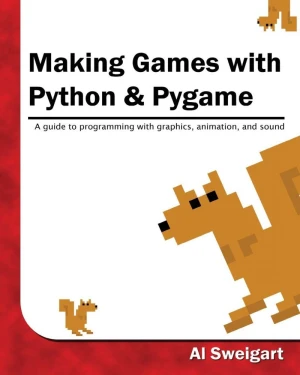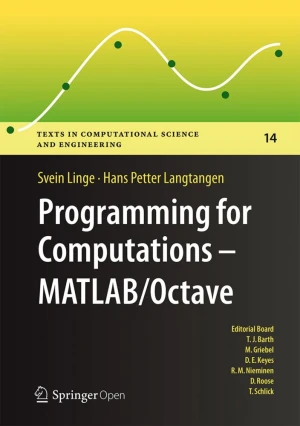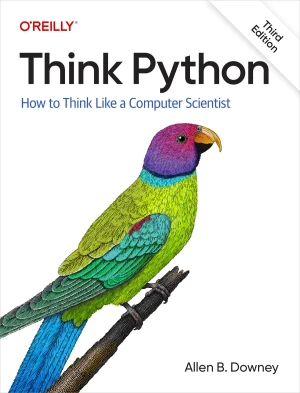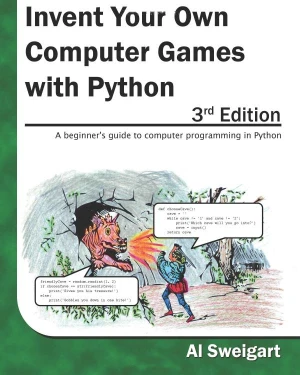Programming for Computations - Python
A Gentle Introduction to Numerical Simulations with Python
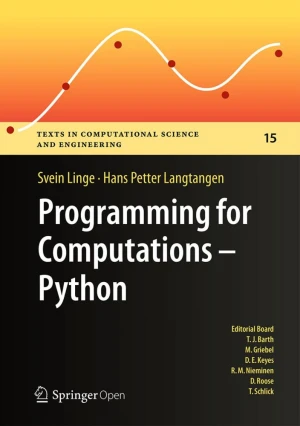
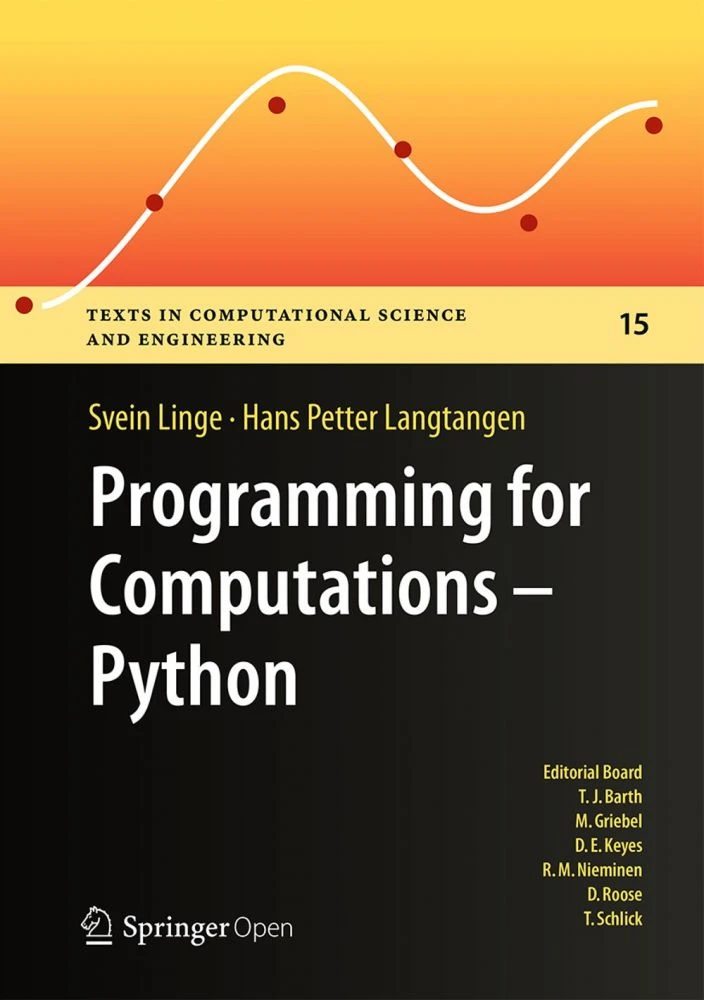
Book Details
| Authors | Svein Linge, Hans Petter Langtangen |
| Publisher | Springer |
| Published | 2016 |
| Edition | 1st |
| Paperback | 244 pages |
| Language | English |
| ISBN-13 | 9783319324272, 9783319324289 |
| ISBN-10 | 3319324276, 3319324284 |
| License | Creative Commons Attribution-NonCommercial |
Book Description
This book presents computer programming as a key method for solving mathematical problems. There are two versions of the book, one for MATLAB and one for Python. The book was inspired by the Springer book TCSE 6: A Primer on Scientific Programming with Python (by Langtangen), but the style is more accessible and concise, in keeping with the needs of engineering students.The book outlines the shortest possible path from no previous experience with programming to a set of skills that allows the students to write simple programs for solving common mathematical problems with numerical methods in engineering and science courses. The emphasis is on generic algorithms, clean design of programs, use of functions, and automatic tests for verification.
This book is available under a Creative Commons Attribution-NonCommercial license (CC BY-NC), which means that you are free to copy, distribute, and modify it, as long as you attribute the source and don't use it for commercial purposes.
If you enjoyed the book and would like to support the author, you can purchase a printed copy (hardcover or paperback) from official retailers.
Download and Read Links
Share this Book
[localhost]# find . -name "*Similar_Books*"
Programming for Computations - Python, 2nd Edition
This book presents computer programming as a key method for solving mathematical problems. This second edition of the well-received book has been extensively revised: All code is now written in Python version 3.6 (no longer version 2.7). In addition, the two first chapters of the previous edition have been extended and split up into five new chapte
Making Games with Python & Pygame
Making Games with Python & Pygame covers the Pygame library with the source code for 11 games. Making Games was written as a sequel for the same age range as Invent with Python. Once you have an understanding of the basics of Python programming, you can now expand your abilities using the Pygame library to make games with graphics, animation, and s
Programming for Computations - MATLAB/Octave
This book presents computer programming as a key method for solving mathematical problems. There are two versions of the book, one for MATLAB and one for Python. The book was inspired by the Springer book TCSE 6: A Primer on Scientific Programming with Python (by Langtangen), but the style is more accessible and concise, in keeping with the needs o
Introduction to Computer Programming with Python
This introduction to computer programming with Python begins with some of the basics of computing and programming before diving into the fundamental elements and building blocks of computer programs in Python language. From the installation of Python, Python interactive programming, and integrated development environments, to raising and handling e
Think Python, 3rd Edition
Think Python is an introduction to Python programming for beginners. It starts with basic concepts of programming; it is carefully designed to define all terms when they are first used and to develop each new concept in a logical progression. Larger pieces, like recursion and object-oriented programming, are divided into a sequence of smaller steps
Invent Your Own Computer Games with Python, 3rd Edition
Invent Your Own Computer Games with Python teaches you how to program in the Python language. Each chapter gives you the complete source code for a new game, and then teaches the programming concepts from the examples. Games include Guess the Number, Hangman, Tic Tac Toe, and Reversi. This book also has an introduction to making games with 2D graph

